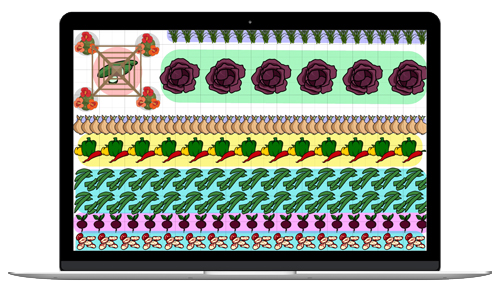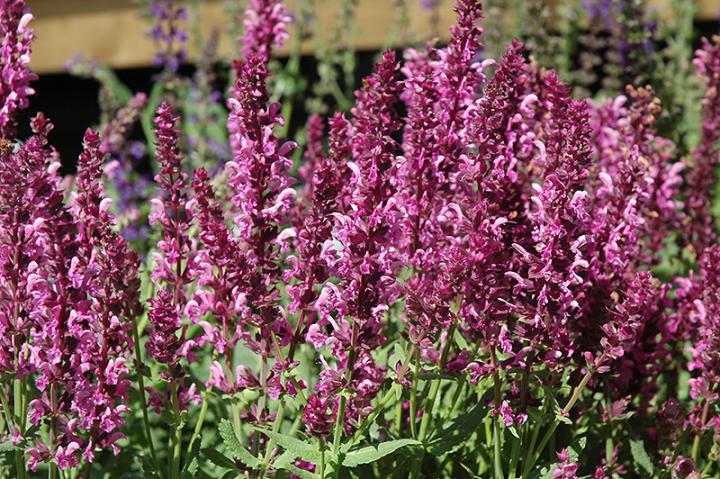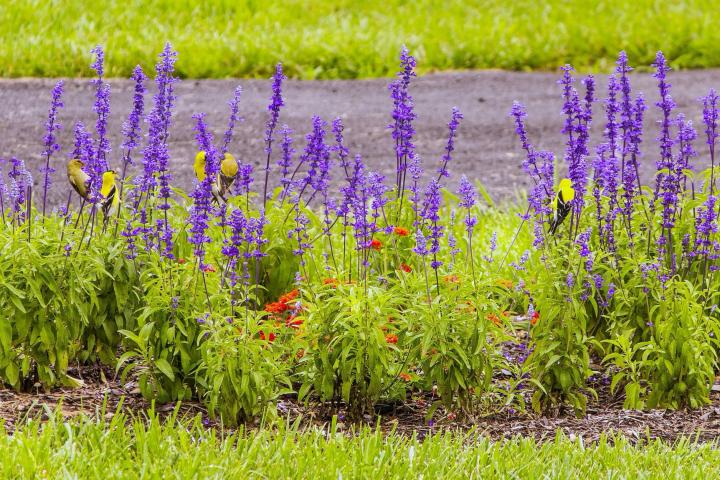
How to Plant, Grow, and Care for Salvia Flowers
The Almanac Garden Planner - Use It Free for 7 Days!
Plan your 2025 garden with our award-winning Garden Planner.
Part of the mint family (Lamiaceae), the genus Salvia includes about 960 species; many of the tender perennials are grown as annuals in cold regions. Depending on the variety, plants can be 18 inches to 5 feet tall, but many are suitable for containers, too.
These common salvias are usually grown as annuals; they may be grown as perennials in warmer regions:
- Pineapple sage (Salvia elegans): Mexico/Guatemala native; bright red, edible flowers in late summer; leaves emit a fruity fragrance when crushed; up to 4 feet tall; hardy in Zones 8 and up
- Scarlet or Texas sage (S. coccinea): bright red flowers; hardy in Zones 9 and higher; 1 to 3 feet tall
- Scarlet bedding sage (S. splendens): Brazilian native; flowers can be red, purple, orange, lavender, yellow, or white; heart-shaped leaves; up to 2 feet tall
These salvias are usually grown as perennials:
- Autumn sage (S. greggii): blooms from spring to frost in a rainbow of colors; disease-free and drought-tolerant; 2- to 3-foot–tall mounding form
- Hybrid sage (S. x superba): ideal for cold areas; rosy purple blooms in late spring to early summer; rebloom to fall if faded flowers are cut back; 1 to 2 feet tall; ‘Rose Queen’ bears pink flowers
- Pitcher sage (S. azurea var. grandiflora), aka blue sage: aromatic foliage; large, sky-blue flowers in late fall; 3- to 5-foot clumping form
- Peruvian sage (S. discolor): native to Peru; leaves are gray-green on the top, with white undersides; dark purple flowers; spreading, floppy form; 1 to 3 feet tall
ADVERTISEMENT
Hi Mary,
While deadheading salvia is not necessary for its survival, it can promote better blooming, encourage new blooms, and help in your plant’s overall vigor when done correctly.
The ideal time to start deadheading your salvia is after the initial flowering period when the blooms start to fade. Using a pair of sharp pruning shears, remove the faded flowers just above the highest set of leaves or side shoots. Multiple salvia blooms will grow from a central stalk so you will likely see more blooms grow, and that is why you only want to deadhead those with dead or fading flowers and blooms. You may have to deadhead multiple times over the course of the season, but you will be rewarded for your efforts with many beautiful blooms.
Once your blooms are done for the season you have a decision to make about the last set of spent flowers: You can either deadhead to prevent seeds or let them be to encourage reseeding.
Hope this helps!
I ordered may night salvia and didnt realize i was just getting the roots. will they grow quickly to have flowers producing this season? do you just plant the root in the ground?
We raise rabbits/sheep and chickens on out homestead and the rabbits absolutely love sage as a treat, not a repellent at all
My purple salvia has been neglected for 10 years. The stems are 1+inch thick and over 5’ tall leaning over 5’ from the base. Can I cut it back and start over?
Charley-
You can consider cutting it back to the bottom of the plant, just above ground level. Plants will regrow fresh leaves and the next round of blooms.
How do I get my Salvia to stand up straight. They were straight up last week and this week they are falling to the sides.
There are a number of reasons that salvias will flop over. When salvia plants get too much water, are over-fertilized, or do not get enough sun it can cause blooms to fall to the ground.
As the summer progresses, humid conditions can also cause this issue. It can also happen after flowering or if blooms become too heavy.
You can consider cutting it back to the bottom of the plant, just above ground level. Plants will regrow a fresh set of leaves and the next round of blooms.
I just planted small salvia plants. How much do they grow in one season? How long until maturity?
It all depends on variety, as salvias will grow anywhere from 18 inches to 5 feet tall. Plants will reach maturity in the first season.
In spring when can we expect new growth to come up?












